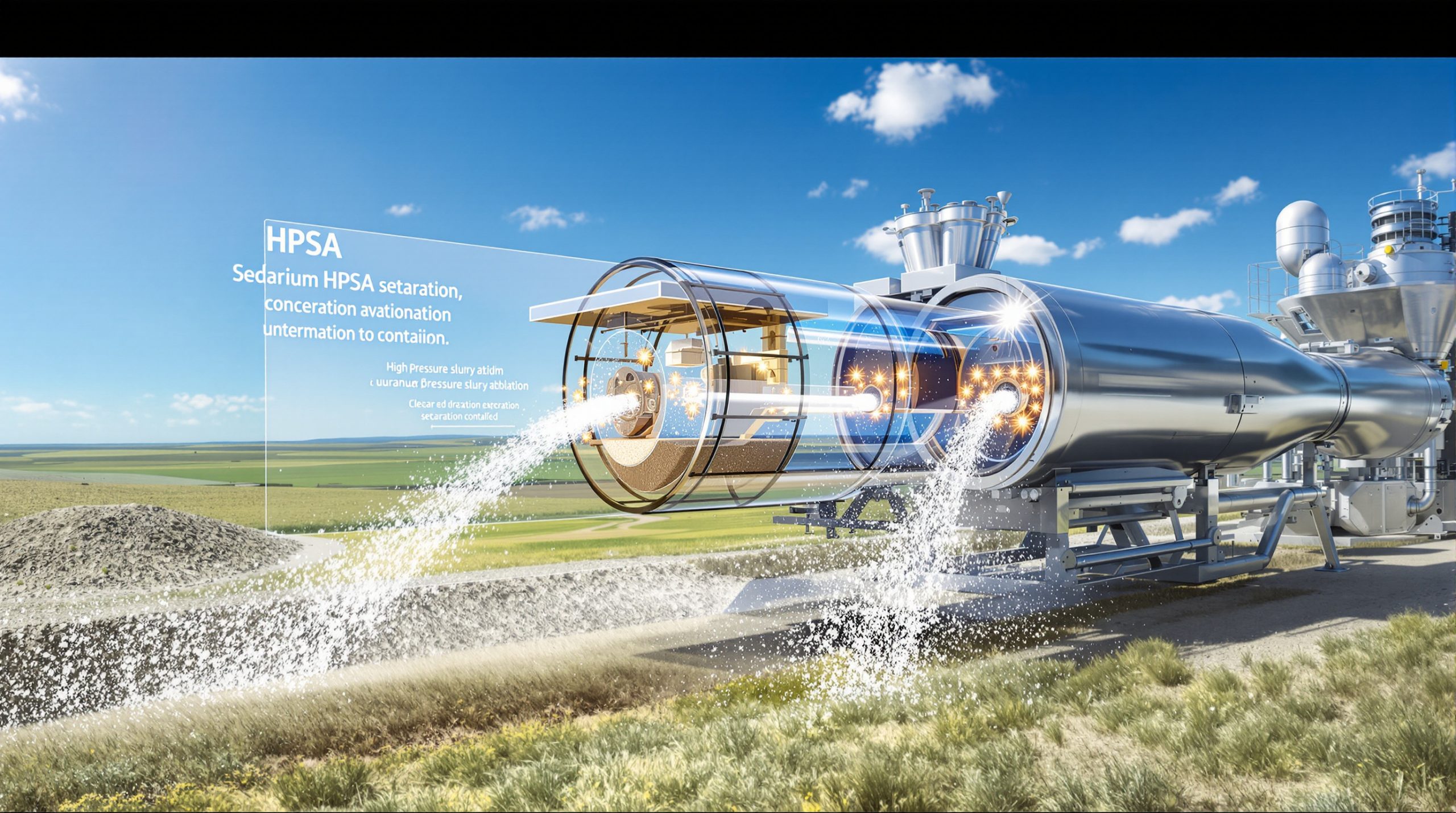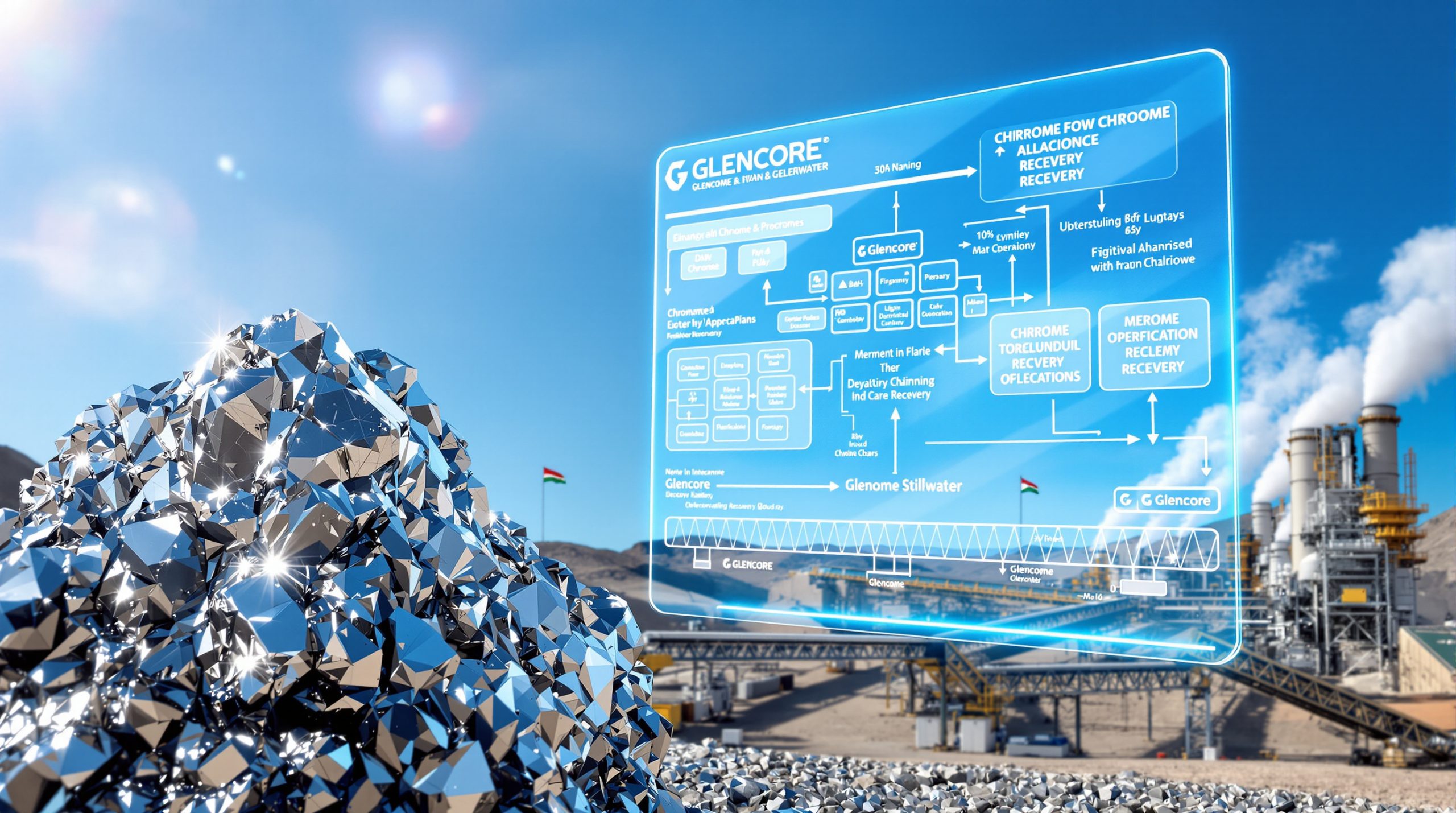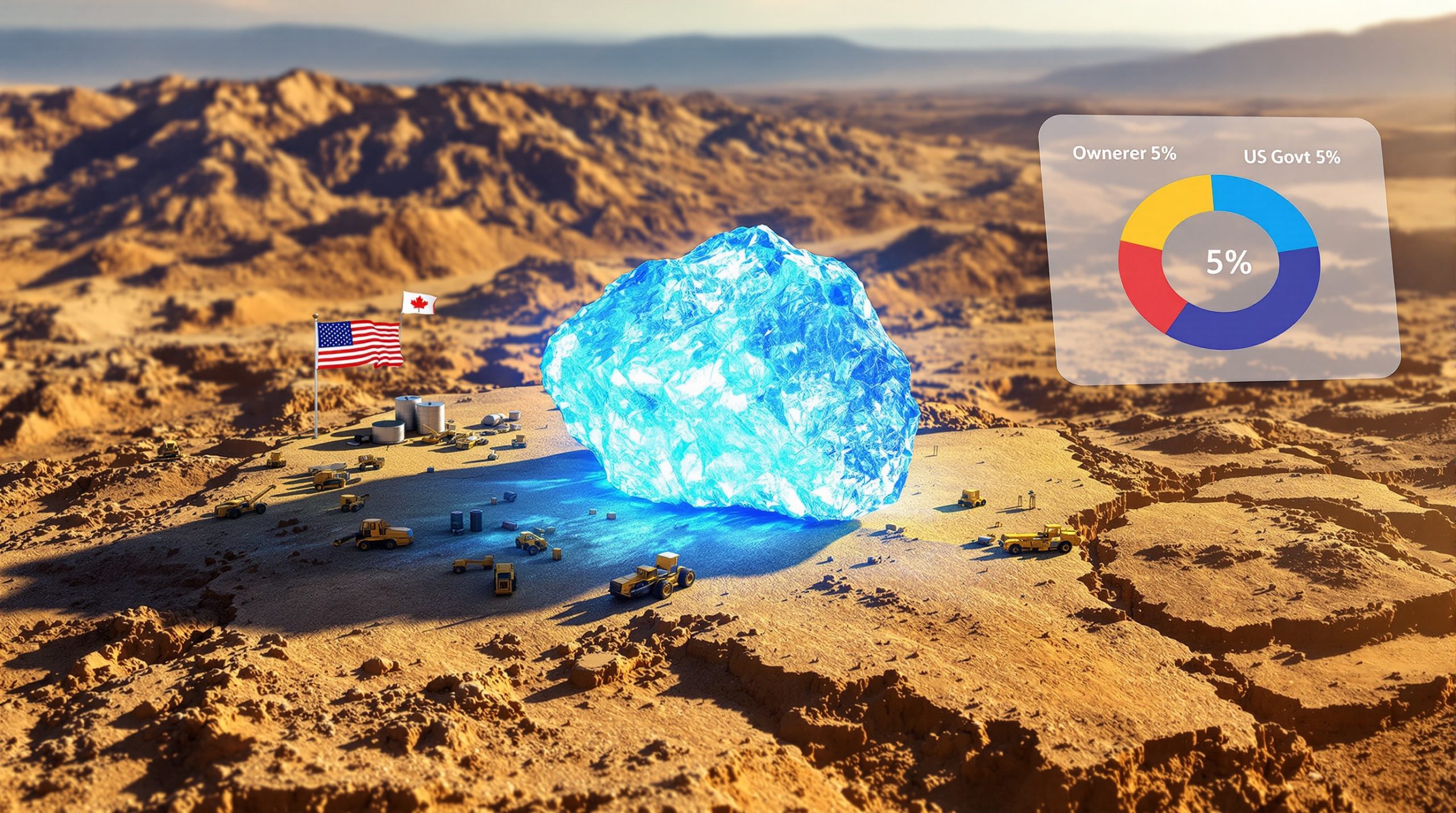Understanding Chalice Mining and the Julimar Deposit: Australia's Critical Minerals Breakthrough
The Julimar deposit represents one of Australia's most significant mineral discoveries in decades. Located approximately 70km northeast of Perth, this discovery by Chalice Mining (ASX:CHN) in March 2020 marked the largest nickel sulfide find globally in over 20 years and the most substantial platinum group elements (PGE) discovery in Australian history. The initial drill hole that intersected significant mineralization transformed what was previously an overlooked exploration area into a world-class mineral resource.
What is the Julimar Deposit and Why is it Significant?
The Discovery That Changed Everything
The Julimar discovery story began when Chalice Mining took a bold mineral exploration approach in an area that had previously received little attention from mining companies. Despite Western Australia's rich mining history, the geological potential of the Julimar region had remained largely unexplored until Chalice's strategic drilling program.
The first diamond drill hole at the Gonneville prospect returned extraordinary results, intersecting substantial high-grade PGE-nickel-copper-cobalt mineralization. This discovery hole immediately signaled the potential scale of the deposit, triggering one of the most successful mineral exploration stories in recent Australian history.
Unlike traditional discoveries that often follow established geological models, the Julimar find demonstrated that significant mineral deposits can still be uncovered in relatively accessible areas using innovative exploration techniques and geological reinterpretation.
Julimar's Impressive Resource Profile
Following extensive drilling campaigns, Chalice Mining has defined a remarkable mineral resource at the Julimar deposit. The Gonneville prospect contains an estimated 560 million tonnes at 0.54% nickel or approximately 1.7g/t palladium equivalent. This translates to:
- 17 million ounces of 3E (palladium, platinum, and gold combined)
- 960,000 tonnes of nickel
- 540,000 tonnes of copper
- 96,000 tonnes of cobalt
When converted to equivalent terms, this represents approximately 3 million tonnes of nickel equivalent or 30 million ounces of palladium equivalent. Notably, 55% of this resource falls within the Measured and Indicated categories, with the remainder classified as Inferred.
The deposit features multiple mineralized zones with varying metal concentrations, including both oxide and sulfide components. The sulfide mineralization exhibits excellent metallurgical characteristics, with initial testing indicating good recovery rates for the primary minerals of economic interest.
Strategic Location Advantage
The geographical positioning of the Julimar deposit represents one of its most compelling advantages. Located just 70km northeast of Perth, Julimar enjoys proximity to:
- Major transportation infrastructure
- Established power and water networks
- A skilled local workforce
- Processing and refining facilities
- Export terminals and shipping routes
Unlike many major mineral discoveries that occur in remote locations, Julimar's proximity to Perth—just one hour's drive away—provides significant logistical and operational advantages. This location eliminates the need for fly-in, fly-out (FIFO) arrangements, allowing workers to commute daily and reducing infrastructure costs substantially.
The deposit also benefits from being situated in Western Australia, a jurisdiction with well-established mining regulations, transparent permitting processes, and a history of supporting resource development while maintaining environmental standards.
How Does Julimar Support the Green Energy Transition?
Critical Minerals for Decarbonization
The Julimar deposit contains a suite of critical minerals for energy transition technologies:
| Mineral | Primary Applications in Green Technology |
|---|---|
| Palladium | Catalytic converters, hydrogen technologies |
| Platinum | Fuel cells, electrolyzers, catalytic applications |
| Nickel | EV batteries, energy storage systems |
| Copper | Electrical infrastructure, renewable energy systems |
| Cobalt | Battery cathodes, high-temperature applications |
Each of these minerals plays a specific role in the transition toward cleaner energy systems and reduced carbon emissions. For example, nickel is increasingly sought after for its use in lithium-ion battery cathodes, where it helps increase energy density and extend the range of electric vehicles.
Platinum and palladium are critical components in hydrogen fuel cells, which are emerging as a promising technology for heavy transport, shipping, and industrial applications where direct electrification may be challenging.
Copper, often overlooked in discussions about critical minerals, is fundamental to all electrification efforts, with electric vehicles requiring up to four times more copper than conventional internal combustion engine vehicles.
Alignment with Government Priorities
The discovery aligns perfectly with the Australian government's critical minerals strategy and similar initiatives among Western allies. These minerals play crucial roles in:
- Electric vehicle production
- Renewable energy infrastructure
- Hydrogen technologies
- Energy storage solutions
- Advanced semiconductor manufacturing
Australia's Critical Minerals Strategy explicitly identifies nickel, cobalt, platinum, and palladium as priority minerals, highlighting their importance to both economic development and national security considerations.
Similarly, the United States, European Union, Japan, and South Korea have all established policies aimed at securing reliable supplies of these minerals, recognizing their strategic importance in both economic and geopolitical contexts.
This strategic alignment positions Chalice Mining to potentially benefit from government support and partnerships aimed at securing domestic supply chains for these critical resources.
"The Julimar discovery represents exactly the kind of critical mineral resource that Western economies are actively seeking to develop as alternatives to current supply chains dominated by countries like China and Russia." – Mining industry analyst, 2023
What Challenges Does Chalice Mining Face?
Capital Requirements and Development Timeline
The development of Julimar faces significant hurdles, particularly regarding financing and project timelines:
- Capital Investment: Estimated development costs range between $1.6-2.3 billion, depending on production scale
- Production Timeline: Final Investment Decision (FID) not expected until 2027
- First Production: Earliest production projected for 2029
- Regulatory Process: Environmental approvals and permitting still in progress
Securing this level of capital investment represents a substantial challenge, even for a deposit of Julimar's quality. The company will likely need to explore multiple financing options, including:
- Strategic partnerships with end-users or processors
- Government development funding or loan guarantees
- Traditional equity and debt markets
- Potential joint venture arrangements
- Staged development approaches to reduce initial capital requirements
The extended timeline from discovery to production is typical for major mining projects but presents challenges in maintaining investor interest and adapting to changing market conditions over a multi-year development period.
Market and Commodity Price Volatility
The project economics are heavily influenced by commodity price fluctuations:
- Price Sensitivity: The original scoping study assumed palladium prices of US$2,000 per ounce, while current prices are approximately half that amount
- Battery Metals Downturn: Recent declines in nickel and other battery metal prices have impacted investor sentiment
- Offtake Uncertainty: Despite the resource's size and quality, no binding offtake agreements have been secured
This price volatility creates significant uncertainty in financial modeling and investment returns. Particularly challenging is the current palladium market, which has seen prices decline substantially from their 2022 peaks, impacting the projected economics of the Julimar operation.
The multi-commodity nature of the deposit provides some natural hedging against individual metal price fluctuations, but also creates complexity in marketing and offtake arrangements, as different buyers may be interested in different elements of the production profile.
Project Development Status
The project remains in relatively early stages of development:
- No Preliminary Feasibility Study (PFS) has been completed yet (expected by end of 2025)
- Environmental review documents are in preparation
- Technical studies and optimization work continue
This early-stage status means that many technical and economic parameters remain subject to refinement and optimization. While this creates uncertainty, it also provides opportunities to enhance project economics through innovative approaches to mining, processing, and product marketing.
The company faces the challenge of balancing thorough technical work with maintaining development momentum and investor interest during a period of market volatility for the key commodities present at Julimar.
How Has Chalice Mining's Stock Performed?
The Remarkable Rise
Following the Julimar discovery in March 2020, chalice mining and julimar deposit success story created extraordinary share price appreciation:
- Pre-discovery share price: approximately 20 cents
- Peak share price: over $9
- Peak market capitalization: exceeded $1.5 billion
This represents one of the most dramatic exploration-driven reratings on the ASX in recent years, with returns exceeding 4,000% at the peak. The company's success transformed it from a small exploration company to a significant player in the Australian resources sector.
The share price performance reflected both the scale and quality of the Julimar discovery and the strategic importance of its mineral content. Market enthusiasm was particularly strong during a period of rising prices for battery metals and platinum group elements.
This period also coincided with increasing investor interest in companies positioned to benefit from the energy transition and decarbonization trends, further boosting Chalice's market appeal.
The Subsequent Correction
Despite the project's fundamental value, Chalice's share price has experienced significant volatility:
- Current market capitalization: approximately $500 million
- Substantial decline from peak valuation
- Share dilution from capital raisings has impacted per-share metrics
When accounting for share dilution, the effective price would be nearly $2 if calculated using the pre-discovery share count, highlighting how capital raising activities have affected the appearance of the decline.
This correction reflects several factors:
- The transition from exploration success to development challenges
- Broader market corrections in the mining and battery metals sectors
- Declining palladium prices affecting project economics
- The extended timeline to production and cash flow
- Dilution from capital raisings to fund ongoing work
Despite this correction, the company's valuation remains substantially above pre-discovery levels, reflecting the market's recognition of Julimar's long-term potential despite near-term challenges.
What's Next for the Julimar Project?
Critical Upcoming Milestones
Several key developments will shape Julimar's future trajectory:
- Preliminary Feasibility Study: Expected by the end of 2025
- Environmental Documentation: Draft Environmental Review Documents anticipated within 12 months
- Potential Partnerships: Following the non-binding memorandum of understanding with Mitsubishi in 2024
- Exploration Upside: The current resource covers only about 2km of the broader 30km Julimar complex
The completion of the Preliminary Feasibility Study represents a particularly important milestone, as it will provide more detailed economic parameters, development scenarios, and technical specifications than the initial scoping study.
Environmental approvals represent another critical path item, especially given the presence of state forest areas within the project footprint. The company has committed to rigorous environmental standards and community engagement throughout this process.
Exploration activities continue along the broader Julimar complex, with potential to identify additional mineralized areas that could enhance the overall project scale or economics.
Factors That Will Determine Success
The project's ultimate success hinges on several critical factors:
- Commodity Price Recovery: Particularly for palladium, nickel, and other battery metals
- Capital Markets Access: Ability to secure the substantial funding required for development
- Binding Offtake Agreements: Securing committed customers for future production
- Regulatory Approvals: Successfully navigating environmental and permitting processes
- Technical Optimization: Improving project economics through engineering solutions
Perhaps most critical is the ability to secure strategic partnerships with end-users of critical minerals. Such partnerships could potentially provide:
- Development capital in exchange for offtake rights
- Technical expertise in downstream processing
- Market access for the project's diverse mineral products
- Risk sharing across the development and operation phases
The company's ability to navigate these factors while maintaining financial flexibility will largely determine Julimar's development timeline and ultimate success.
Why Is the Julimar Deposit Important for Australia's Mining Future?
National Strategic Significance
The Julimar discovery represents more than just a commercial opportunity:
- Supply Chain Security: Provides potential domestic supply of critical minerals
- Economic Diversification: Expands Australia's mining portfolio beyond traditional iron ore and coal
- Technology Positioning: Supports Australia's role in green technology supply chains
- Export Potential: Creates new high-value export opportunities to allied nations
Australia has historically been dominated by iron ore, coal, and gold production. The development of a world-class critical minerals operation would help diversify the nation's resource base and reduce economic dependence on traditional bulk commodities.
The project aligns with Australia's ambition to move up the value chain in critical minerals, potentially supporting downstream processing and manufacturing rather than simply exporting raw materials.
From a geopolitical perspective, the development of Western-controlled sources of critical minerals has taken on increased importance as nations seek to reduce dependence on supplies from China and Russia.
Exploration Implications
The discovery has broader implications for mineral exploration in Australia:
- Underexplored Terrain: Demonstrates potential in areas previously overlooked
- Exploration Methodology: Validates new approaches to targeting mineral systems
- Regional Potential: Suggests possibility of additional discoveries in the region
The Julimar discovery has triggered a significant staking rush in the surrounding region, with numerous companies acquiring exploration ground in the hope of making similar discoveries.
Beyond the immediate area, the discovery has prompted a reassessment of geological models and exploration targeting across Western Australia and beyond, potentially opening new frontiers for mineral exploration.
This exploration renaissance could lead to additional discoveries, further enhancing Australia's position in the global critical minerals supply chain and supporting long-term economic development.
How Does Julimar Compare to Other Critical Mineral Projects?
Competitive Positioning
The Julimar deposit stands out among global critical mineral projects:
| Aspect | Julimar Advantage |
|---|---|
| Resource Size | Among the largest PGE-nickel resources globally |
| Infrastructure | Exceptional access to existing infrastructure |
| Jurisdiction | Located in stable, mining-friendly Western Australia |
| Multi-Commodity | Diverse revenue streams from multiple critical minerals |
| Exploration Upside | Significant potential for resource expansion |
When compared to other major PGE deposits, primarily located in South Africa and Russia, Julimar benefits from its location in a politically stable jurisdiction with well-established mining regulations and infrastructure.
Compared to other nickel sulfide deposits, Julimar's multi-commodity nature provides potential economic advantages through byproduct credits, reducing the effective cost of nickel production.
The deposit's proximity to infrastructure represents a particular advantage over many competing projects located in remote areas, potentially reducing both capital and operating costs significantly.
Development Challenges
Despite these advantages, Julimar faces competition from:
- Established PGE producers in South Africa and Russia
- Advanced nickel projects globally
- Alternative battery material technologies
- Recycling initiatives reducing primary mineral demand
The project must also compete for capital in a mining investment environment that has become increasingly selective, with investors demanding clear paths to production and strong ESG (Environmental, Social, and Governance) credentials.
Technological developments in battery chemistry represent another potential challenge, as shifts away from nickel-intensive cathode formulations could impact long-term demand for one of Julimar's key commodities.
However, the deposit's diverse mineral content provides some protection against single-commodity risks, as changes in technology or market conditions affecting one mineral may be offset by others in the resource profile.
FAQs About Chalice Mining and the Julimar Deposit
What makes the Julimar deposit unique?
The Julimar deposit combines exceptional size, grade, and strategic mineral content with an unusually favorable location near Perth, making it a potentially world-class development opportunity with lower infrastructure requirements than typical remote discoveries.
The multi-commodity nature of the deposit is particularly unusual, containing significant quantities of platinum group elements, nickel, copper, and cobalt in a single ore body. This diverse mineral profile provides potential economic resilience against individual commodity price fluctuations.
The deposit also represents a new mineral province in Western Australia, in an area not previously recognized for its mineral potential, highlighting the ongoing Australian exploration trends and opportunities in seemingly mature mining jurisdictions.
When might Julimar begin production?
Based on current projections, the earliest production could begin is 2029, following a Final Investment Decision expected in 2027, subject to successful completion of feasibility studies, permitting, and financing.
This timeline reflects the substantial work required to advance from discovery to production, including:
- Completion of Preliminary Feasibility Study (expected by end of 2025)
- Detailed engineering and final feasibility studies
- Environmental approvals and permitting
- Financing arrangements and potential partnerships
- Construction period (typically 2-3 years for a project of this scale)
Actual timelines may vary based on technical challenges, permitting processes, market conditions, and strategic decisions regarding development pathways.
What are the main risks to the project's development?
Key risks include commodity price volatility, capital cost inflation, permitting delays, technical challenges in metallurgical recovery, and competition for investment capital in the mining sector.
Particularly significant is the current palladium price environment, which has declined substantially from the levels assumed in earlier economic assessments. Continued weakness in this key commodity could impact project economics and development decisions.
Environmental permitting represents another critical risk factor, especially given the presence of state forest areas within the project footprint. The company will need to demonstrate effective environmental management and potentially develop offset strategies to secure necessary approvals.
The substantial capital requirement ($1.6-2.3 billion) presents a funding challenge, particularly in a capital market environment that has become more selective about mining investments
Ready to Capitalise on the Next Major Mineral Discovery?
Stay ahead of the market with Discovery Alert's proprietary Discovery IQ model, which instantly identifies significant mineral discoveries on the ASX before the broader market. Explore why discoveries like Julimar can generate substantial returns by visiting our dedicated discoveries page and begin your 30-day free trial today.




